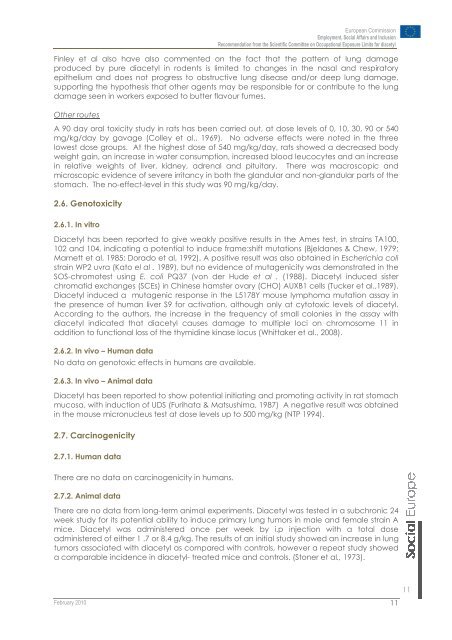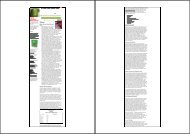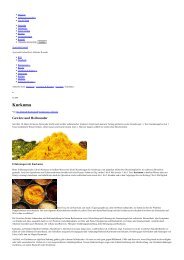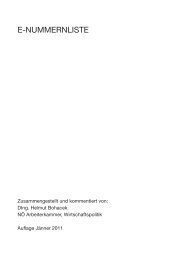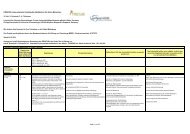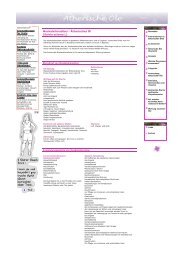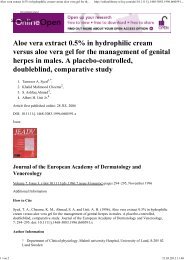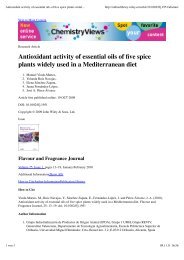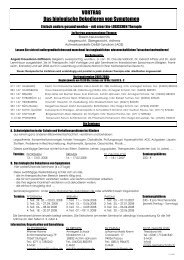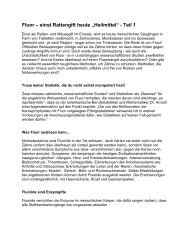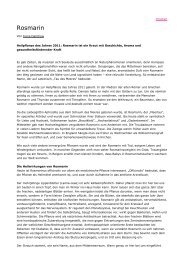Recommendation from the Scientific Committee on Occupational ...
Recommendation from the Scientific Committee on Occupational ...
Recommendation from the Scientific Committee on Occupational ...
You also want an ePaper? Increase the reach of your titles
YUMPU automatically turns print PDFs into web optimized ePapers that Google loves.
February 2010<br />
European Commissi<strong>on</strong><br />
Employment, Social Affairs and Inclusi<strong>on</strong><br />
<str<strong>on</strong>g>Recommendati<strong>on</strong></str<strong>on</strong>g> <str<strong>on</strong>g>from</str<strong>on</strong>g> <str<strong>on</strong>g>the</str<strong>on</strong>g> <str<strong>on</strong>g>Scientific</str<strong>on</strong>g> <str<strong>on</strong>g>Committee</str<strong>on</strong>g> <strong>on</strong> Occupati<strong>on</strong>al Exposure Limits for diacetyl<br />
Finley et al also have also commented <strong>on</strong> <str<strong>on</strong>g>the</str<strong>on</strong>g> fact that <str<strong>on</strong>g>the</str<strong>on</strong>g> pattern of lung damage<br />
produced by pure diacetyl in rodents is limited to changes in <str<strong>on</strong>g>the</str<strong>on</strong>g> nasal and respiratory<br />
epi<str<strong>on</strong>g>the</str<strong>on</strong>g>lium and does not progress to obstructive lung disease and/or deep lung damage,<br />
supporting <str<strong>on</strong>g>the</str<strong>on</strong>g> hypo<str<strong>on</strong>g>the</str<strong>on</strong>g>sis that o<str<strong>on</strong>g>the</str<strong>on</strong>g>r agents may be resp<strong>on</strong>sible for or c<strong>on</strong>tribute to <str<strong>on</strong>g>the</str<strong>on</strong>g> lung<br />
damage seen in workers exposed to butter flavour fumes.<br />
O<str<strong>on</strong>g>the</str<strong>on</strong>g>r routes<br />
A 90 day oral toxicity study in rats has been carried out, at dose levels of 0, 10, 30, 90 or 540<br />
mg/kg/day by gavage (Colley et al., 1969). No adverse effects were noted in <str<strong>on</strong>g>the</str<strong>on</strong>g> three<br />
lowest dose groups. At <str<strong>on</strong>g>the</str<strong>on</strong>g> highest dose of 540 mg/kg/day, rats showed a decreased body<br />
weight gain, an increase in water c<strong>on</strong>sumpti<strong>on</strong>, increased blood leucocytes and an increase<br />
in relative weights of liver, kidney, adrenal and pituitary. There was macroscopic and<br />
microscopic evidence of severe irritancy in both <str<strong>on</strong>g>the</str<strong>on</strong>g> glandular and n<strong>on</strong>-glandular parts of <str<strong>on</strong>g>the</str<strong>on</strong>g><br />
stomach. The no-effect-level in this study was 90 mg/kg/day.<br />
2.6. Genotoxicity<br />
2.6.1. In vitro<br />
Diacetyl has been reported to give weakly positive results in <str<strong>on</strong>g>the</str<strong>on</strong>g> Ames test, in strains TA100,<br />
102 and 104, indicating a potential to induce frame:shift mutati<strong>on</strong>s (Bjeldanes & Chew, 1979;<br />
Marnett et al, 1985; Dorado et al, 1992). A positive result was also obtained in Escherichia coli<br />
strain WP2 uvra (Kato el al . 1989), but no evidence of mutagenicity was dem<strong>on</strong>strated in <str<strong>on</strong>g>the</str<strong>on</strong>g><br />
SOS-chromotest using E. coli PQ37 (v<strong>on</strong> der Hude et al . (1988). Diacetyl induced sister<br />
chromatid exchanges (SCEs) in Chinese hamster ovary (CHO) AUXB1 cells (Tucker et al.,1989).<br />
Diacetyl induced a mutagenic resp<strong>on</strong>se in <str<strong>on</strong>g>the</str<strong>on</strong>g> L5178Y mouse lymphoma mutati<strong>on</strong> assay in<br />
<str<strong>on</strong>g>the</str<strong>on</strong>g> presence of human liver S9 for activati<strong>on</strong>, although <strong>on</strong>ly at cytotoxic levels of diacetyl.<br />
According to <str<strong>on</strong>g>the</str<strong>on</strong>g> authors, <str<strong>on</strong>g>the</str<strong>on</strong>g> increase in <str<strong>on</strong>g>the</str<strong>on</strong>g> frequency of small col<strong>on</strong>ies in <str<strong>on</strong>g>the</str<strong>on</strong>g> assay with<br />
diacetyl indicated that diacetyl causes damage to multiple loci <strong>on</strong> chromosome 11 in<br />
additi<strong>on</strong> to functi<strong>on</strong>al loss of <str<strong>on</strong>g>the</str<strong>on</strong>g> thymidine kinase locus (Whittaker et al., 2008).<br />
2.6.2. In vivo – Human data<br />
No data <strong>on</strong> genotoxic effects in humans are available.<br />
2.6.3. In vivo – Animal data<br />
Diacetyl has been reported to show potential initiating and promoting activity in rat stomach<br />
mucosa, with inducti<strong>on</strong> of UDS (Furihata & Matsushima, 1987) A negative result was obtained<br />
in <str<strong>on</strong>g>the</str<strong>on</strong>g> mouse micr<strong>on</strong>ucleus test at dose levels up to 500 mg/kg (NTP 1994).<br />
2.7. Carcinogenicity<br />
2.7.1. Human data<br />
There are no data <strong>on</strong> carcinogenicity in humans.<br />
2.7.2. Animal data<br />
There are no data <str<strong>on</strong>g>from</str<strong>on</strong>g> l<strong>on</strong>g-term animal experiments. Diacetyl was tested in a subchr<strong>on</strong>ic 24<br />
week study for its potential ability to induce primary lung tumors in male and female strain A<br />
mice. Diacetyl was administered <strong>on</strong>ce per week by i.p injecti<strong>on</strong> with a total dose<br />
administered of ei<str<strong>on</strong>g>the</str<strong>on</strong>g>r 1 .7 or 8.4 g/kg. The results of an initial study showed an increase in lung<br />
tumors associated with diacetyl as compared with c<strong>on</strong>trols, however a repeat study showed<br />
a comparable incidence in diacetyl- treated mice and c<strong>on</strong>trols. (St<strong>on</strong>er et al., 1973).<br />
11<br />
11


